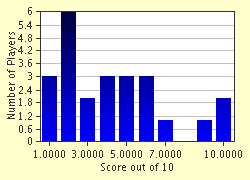Quiz Answer Key and Fun Facts
1. Brazilian driver Pedro Diniz and British world champion Damon Hill raced for which team during the 1997 F1 season?
2. Which US city hosted an F1 race between 1982 and 1988 on a circuit set out along roads near the Renaissance Center and the Cobo Center?
3. John Crichton-Stuart competed in F1 in 1986 under a name based on the aristocratic title that he held at that time. How is this British peer of the realm known in F1 circles?
4. The Dijon-Prenois circuit hosted the French Grand Prix on five occasions between 1974 and 1984. Which other F1 event did it host in 1982?
5. Which company competed in F1 from 1988 to 1992 with the BMS Scuderia Italia team and later designed and built chassis for other teams including HRT and Haas F1?
6. At the 1974 Swedish Grand Prix, which F1 driver recorded his one and only pole position?
7. The Dutch Grand Prix first joined the F1 world championship calendar in 1952. Which driver, who went on to win that year's title, won the inaugural event?
8. Which F1 circuit features the Dunlop Curve and the Degner Curve?
9. Dunn Engineering, Deidt and Del Roy were three F1 racing teams that only ever competed at one specific race on the F1 calendar in the 1950s. Which one?
10. Who became the first Danish driver to stand on an F1 podium when he took second place at the 2014 Australian Grand Prix?
Source: Author
Fifiona81
This quiz was reviewed by FunTrivia editor
gtho4 before going online.
Any errors found in FunTrivia content are routinely corrected through our feedback system.


